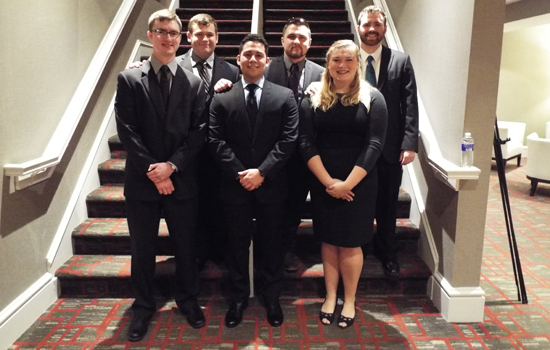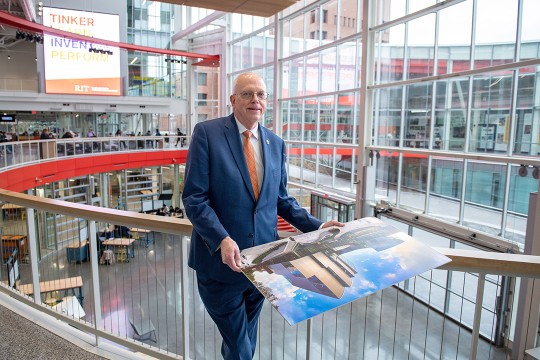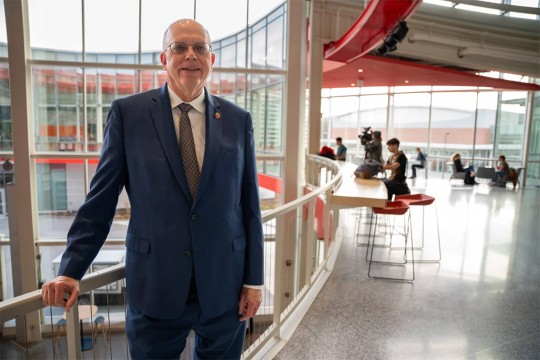CAST team wins design award
Team takes top honors in design/build category among Northeast collegiate teams
provided by Holly Holevinski
Undergraduates from CAST’s civil engineering technology program won first place in a building design competition recently. Team winners are (back row, left to right) Ian Crell, Doyle Guyatte and Michael Doremus and (front row, left to right) David Collins (captain), Kevin Morfin and Megan Few.
Undergraduate students from Rochester Institute of Technology took first place in the Associated Schools of Construction—Northeast Regional competition for their plan to redesign a workspace for NASA’s Johnson Space Center. Early preparation and research into customer requirements helped the team put together a comprehensive plan that transformed a library in a five-story engineering building into an occupational health facility for space industry workers. They were the top finisher among 10 teams and were awarded a $2,000 prize for their design.
“It was a pretty exciting project. It was really rewarding, good to see that our hard work paid off because we were meeting every week to do simulations,” said David Collins, a third-year civil engineering technology student from Pittsford, N.Y., in RIT’s College of Applied Science and Technology. He was the team project manager. “It was a lot of hard work over a short amount of time.”
The competition is part of the annual Associated Schools of Construction conference and job fair, held in November in Morristown, N.J. Universities from four-year construction engineering and management degree programs in the Northeast—from Maine to Virginia—participate in events to advance construction education.
The redesign objectives described the need to combine services into one clinic for the astronauts in a 15,000 square foot building. Teams had to assess the services required and determine space, materials usage, cost estimates and detail the entire construction timetable with contingencies, Collins explained. Some initial preparation could be done prior to the competition, but the entire project management plan had to be completed in one day followed by a formal presentation in front of judges that included several representatives of the Kiewit Building Group, the firm that performed the actual construction at the space center.
“They gave us a very general project statement about what they wanted and we did interviews with some nurses and doctors about what goes into these buildings. We went in and basically said that we would gut the entire building,” said Collins. “I liked seeing our whole team come together. It was six people that hadn’t really worked together before this. We are in class together but it was all of us working on this one project and seeing how everyone has developed over the course of one year in preparing for this one day.”
“The competition mirrors the intensity of a real-world bid proposal,” said Todd Dunn, department chair of civil engineering technology, environmental management and safety program, part of RIT’s College of Applied Science and Technology. “The questions from the judging panel during oral presentation are challenging and focused, but our design/build team had prepared for months in advance and it showed.”
Dunn traveled with three student teams that competed, one in each of the three categories in the competition—design build, heavy civil and commercial building. The competition and job fair were opportunities for the students to see how concepts learned in class are being applied in construction and engineering firms today. For Collins, participation on the project team was a way to help solidify his career choice in the field. He and several members of the team will bring this real world experience as they begin their first co-ops this spring.
“I had no experience in this area, but last year, when I first joined the team, basically I sat, listened and learned a lot. I had a minor role, but it still helped me learn a lot about what to do. I did some research on my own, because as civil engineering technology students we don’t take construction management courses until our fourth or fifth year. But, still, this has turned into a career path.”















